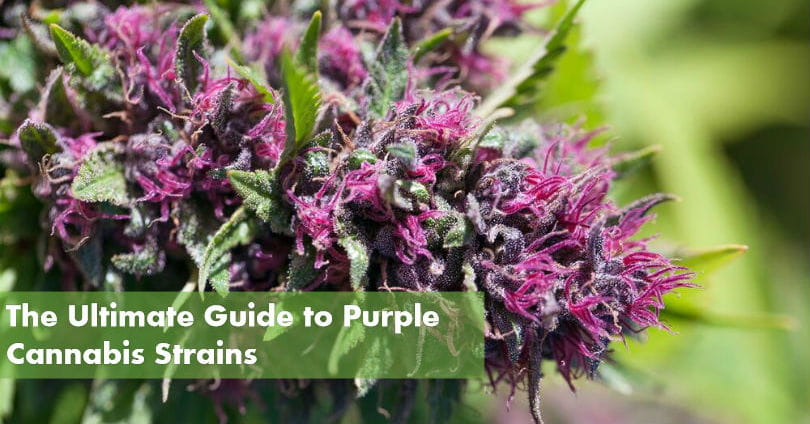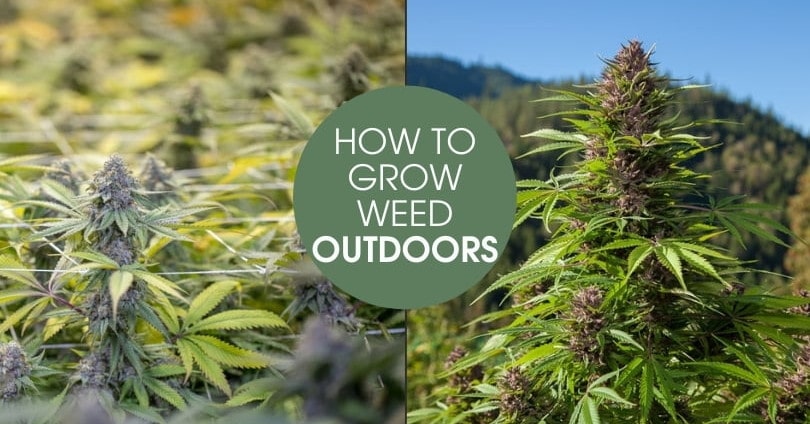 One of the most common methods to feed indoor cannabis plants is with the help of liquid nutrients.
One of the most common methods to feed indoor cannabis plants is with the help of liquid nutrients.
From their ease-of-use to scale-tipping efficiency, new cannabis cultivators and professionals benefit from using bottled fertilizer on their marijuana crop.
However, with great power comes great responsibility. In other words, liquid nutrients are a double-edged sword because they offer compelling results for skilled growers but disastrous outcomes for growers who don’t understand how to use them.
If you want to push your cannabis crop to the limit and produce diamond-encrusted buds ripe with terpenes and cannabinoids — look no further than this guide on how to use liquid nutrients for cannabis plants!
Once you finish this tutorial, you’ll feel confident to step up your game and grow next-level weed.
What Are Liquid Nutrients and Why Are They Advantageous?
If you’re already familiar with cannabis fertilizer, continue reading. However, if you’re entirely new to the concept of marijuana-based nutrients, please head over to our in-depth explainer in our Grow Bible under Step 2 — Nutrients.
To understand liquid nutrients and why they’re advantageous to use, let’s talk about natural nutrient cycles.
Organic soil and amendments require natural cycles to break down nutrients into available forms. Alternatively, bottled fertilizers do not require natural nutrient cycles. To understand this concept, let’s briefly discuss an example of the natural nutrient cycle for nitrogen.
In the natural world, cannabis plants rely on the nitrogen cycle to harness one of their primary food sources — nitrogen. The process begins with atmospheric nitrogen (N2), which is not available to marijuana plants.
However, denitrifying bacteria and nitrogen-fixing bacteria within the soil transform atmospheric nitrogen into usable forms, such as nitrate (NO3). Once converted to nitrate, cannabis roots happily uptake nitrogen for rapid and green growth.
So, how does the nitrogen cycle relate to liquid nutrients and cannabis plants?
For starters, bottled fertilizers skip natural cycles entirely because the nutrients inside the bottle are in their available form. In other words, bottled fertilizers contain all of the necessary NPK ratios to grow weed.
Therefore, liquid nutrients are concentrated forms of cannabis food readily available for root-based or foliar absorption.
Ultimately, liquid cannabis fertilizer is advantageous because they:
- Allow for rapid nutritional uptake
- Increase yield
- Stimulate enhanced growth
- Reduce flowering time
- Elevate disease and pest resistance
As you can see, liquid nutrients are incredible products to feed cannabis plants with. However, you must understand that there are vital considerations to know before feeding weed plants with liquid fertilizer.

You’ll find many different types of liquid cannabis fertilizer online and in-store.
Key Considerations Before Feeding Marijuana Plants With Bottled Nutrients
With so many “pros” of bottled nutrients, it’s hard to believe that they can harm your beloved cannabis crop.
Believe us when we say that bottled cannabis nutrients can and will harm your weed plants if misapplied. Here are the three critical considerations before using bottled nutrients on marijuana plants to avoid any future headaches.
How Much Liquid Fertilizer Do Cannabis Plants Need?
It depends.
Although this answer may seem sarcastic — it’s the truth. All cannabis strains, whether feminized or autoflowering, are subject to varying nutrient requirements.
Some weed strains are heavy feeders, while others are sensitive to nutrients. Luckily, however, we have a trick that will fast-track the proper fertilizer dose in no time.
All liquid fertilizers exhibit a recommended dose or feeding chart for cannabis plants on the label. Whether the recommended dose is 5mL or 20mL per gallon — cut it in half for the first feeding.
If the cannabis plant loves it — you know this nutrient dose “works” for your particular weed strain. If your marijuana plant exhibits burned or hooked leaves — tone down the nutrient dose. Alternatively, if your cannabis plant begins to turn yellow — amp up the nutrient dose.
Remember, all feeding charts or recommended doses on cannabis-oriented bottled fertilizers are generalized recommendations.
Here’s what a general feeding chart for marijuana plants looks like when growing weed in hydroponics with liquid nutrients:
- Seedling stage: 350-450 PPM
- Week 1 (Vegetative): 600-900 PPM
- Week 2 (Vegetative): 1,000-1,400 PPM
- Week 3 (Pre-flower): 1,050-1,400 PPM
- Week 4 (Pre-flower): 1,050-1,400 PPM
- Week 5 (Early bloom): 1,050-1,400 PPM
- Week 6 (Early bloom): 1,050-1,400 PPM
- Week 7 (Mid-bloom): 1,050-1,400 PPM
- Week 8 (Mid-bloom): 1,050-1,400 PPM
- Week 9 (Late-bloom): 1,100-1,400 PPM
- Week 10 (Late-bloom): 1,100-1,200 PPM
- Week 11 (Flush): 0-50 PPM
Remember, the PPM or EC that you use in your feeding schedule may differ from these values.

Here’s an example of a feeding schedule from FoxFarm.
How Often Should You Give Cannabis Plants Liquid Fertilizer?
If you are growing weed in hydroponics — you will feed your cannabis plants every day with liquid nutrients. Remember, soilless or hydroponic-based media is void of nutrient content and requires consistent application of salt-based fertilizer.
If you are using bottled nutrients as a supplement in addition to organic soil, once to twice a week will suffice depending on the amount of organic fertilizer present in the soil.
Are Your pH and Nutrient Meters Calibrated?
One of the most important considerations before using bottled cannabis nutrients is a question of hardware. To grow marijuana with liquid fertilizer, you must have a pH and nutrient meter.
If you fail to use a nutrient or pH meter — your cannabis plants will die. If you’d like to educate yourself further on nutrient or pH meters, head over to our guides — Why You Need to Use a pH Meter When Growing Weed in Hydroponics, How to Calibrate and Use a pH Meter, and How to Calibrate and Use a Nutrient Meter.
Remember, growing cannabis without a pH or nutrient meter while using liquid fertilizer is akin to going into an uncharted forest without a map or compass. If you want your cannabis plants to survive, you must use a calibrated pH and nutrient meter for effective results.

Make sure you’re pH and nutrient meters are calibrated before you start using them.
How to Use Liquid Nutrients For Cannabis Plants in Five Easy Steps
Ok, now that we have all of the necessary disclaimers behind us — let’s learn how to use bottled nutrients in five easy steps!
Before we begin, here’s a list of necessary tools required for the job:
- Bottled nutrients
- Plastic syringe/applicator
- Gloves/goggles
- pH up or down solution
- Calibration solution
- pH meter
- Nutrient meter
- Mixing container (i.e., 5-gallon bucket)
Once you’ve gathered all of these tools — let’s begin!
Step One: Calibrate

First and foremost — calibrate your pH and nutrient meter!
Properly calibrating the pH and nutrient pen is a fundamental step. If you’ve never calibrated a nutrient or pH pen — don’t worry! Read our guides — How to Calibrate and Use a pH Meter and How to Calibrate and Use a Nutrient Meter to learn more.
Once the calibration process is complete, move on to step two.
Step Two: Find the Feeding Schedule
Next, read the directions on the liquid fertilizer bottle.
All nutrient brands have their own feeding schedule listed on their website or directly on the bottle. If it’s the first week of flowering (pre-bloom stage), look for the recommended dosage for this period.
Step Three: Measure Your Water
Once you know how much liquid nutrient you need, it’s time to get your water ready.
Whether you opt to use filtered water or not, fill the necessary amount of water that you’ll need. Remember, all nutrient dosage recommendations are calculated in gallons or liters.
Step Four: Measure Nutrient Solution

Now, place the desired amount of water into the mixing container.
Once complete, use the plastic syringe to obtain a specific amount of liquid fertilizer and release it into the mixing container’s water.
What you have now is a nutrient solution.
However, the nutrient solution cannot be applied to your cannabis plants yet. Head over to step five to finalize the nutrient solution for use.
Step Five: Mix Nutrient Solution
Last but not least — mix the nutrient solution.
Once mixed, use the pH and nutrient meter and take a reading. If the reading is above or below your target pH and PPM — you must adjust the nutrient solution with:
- More nutrient (increase PPM)
- More water (Reduce PPM)
- pH up (Increase pH)
- pH down (Decrease pH)
As long as you’ve reached your target pH and PPM/EC — you’re done!
Once your nutrient solution is ready, you may now feed your marijuana plants. Whether you use a reservoir in a hydroponic system or hand-water a pot full of coco coir — your weed plants will enjoy it to the last drop!

Mix your nutrient solution and take a reading.
A Well-Balanced Diet Is The Key To a Cannabis Plant’s Happiness
Remember, moderation is the key to success when growing marijuana plants.
Many new cannabis cultivators fall into the trap of believing the more nutrients, the better. However, this idea couldn’t be further from the truth.
Pumping your weed plants full of nutrients will result in a nutrient burn, lockout, and many other problems. To avoid this common beginner’s mistake, always feed your cannabis plants a balanced diet.
Until you find the perfect diet for your cannabis plants, this guide will ensure a record-breaking harvest of top-shelf buds.
If you wish to learn more about bloom boosters and alternative feeding methods, read our guides — How to Foliar Feed Cannabis Plants (Coming Soon) and How to Use Bloom Boosters For Cannabis Plants (Coming Soon).



